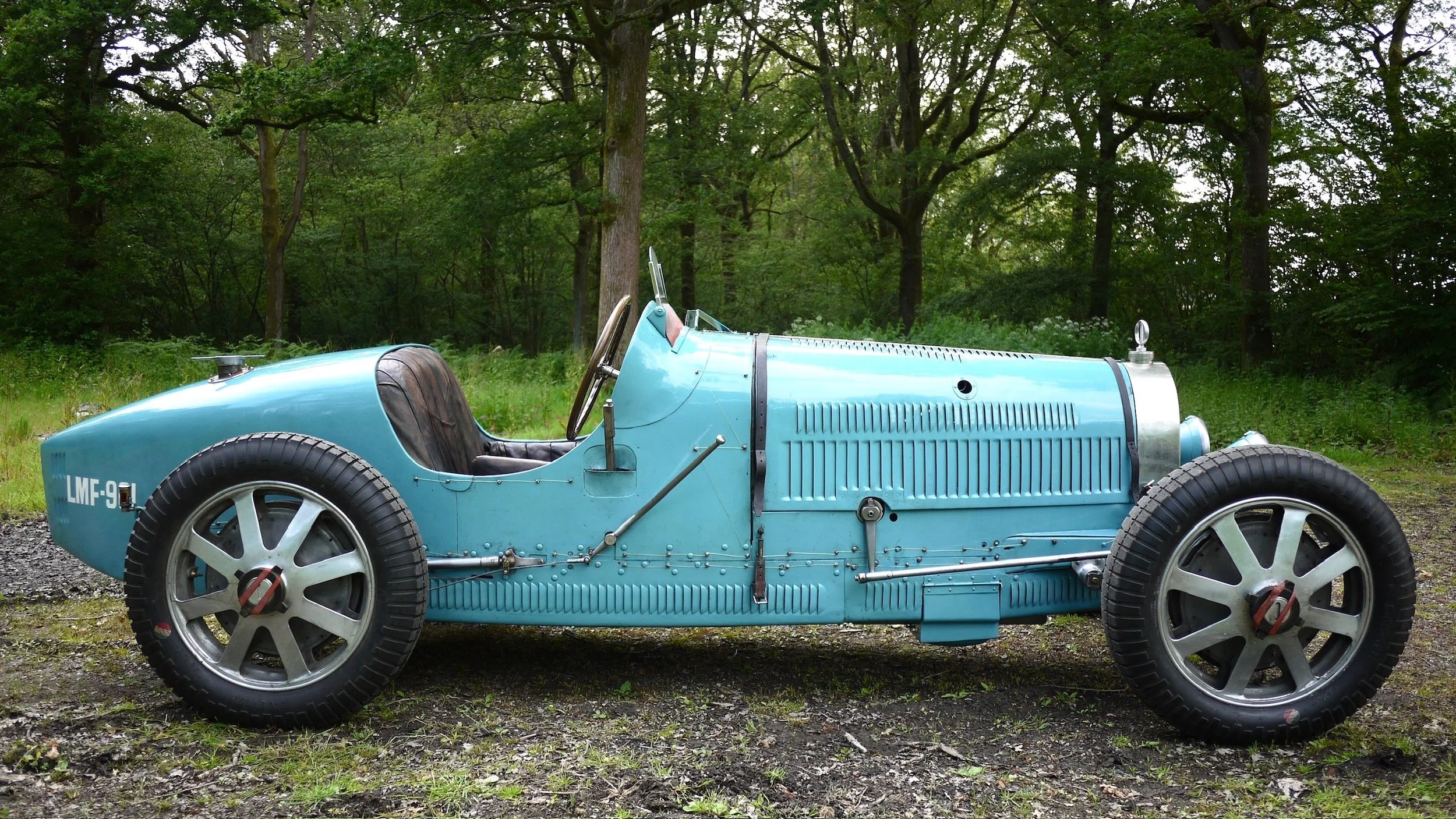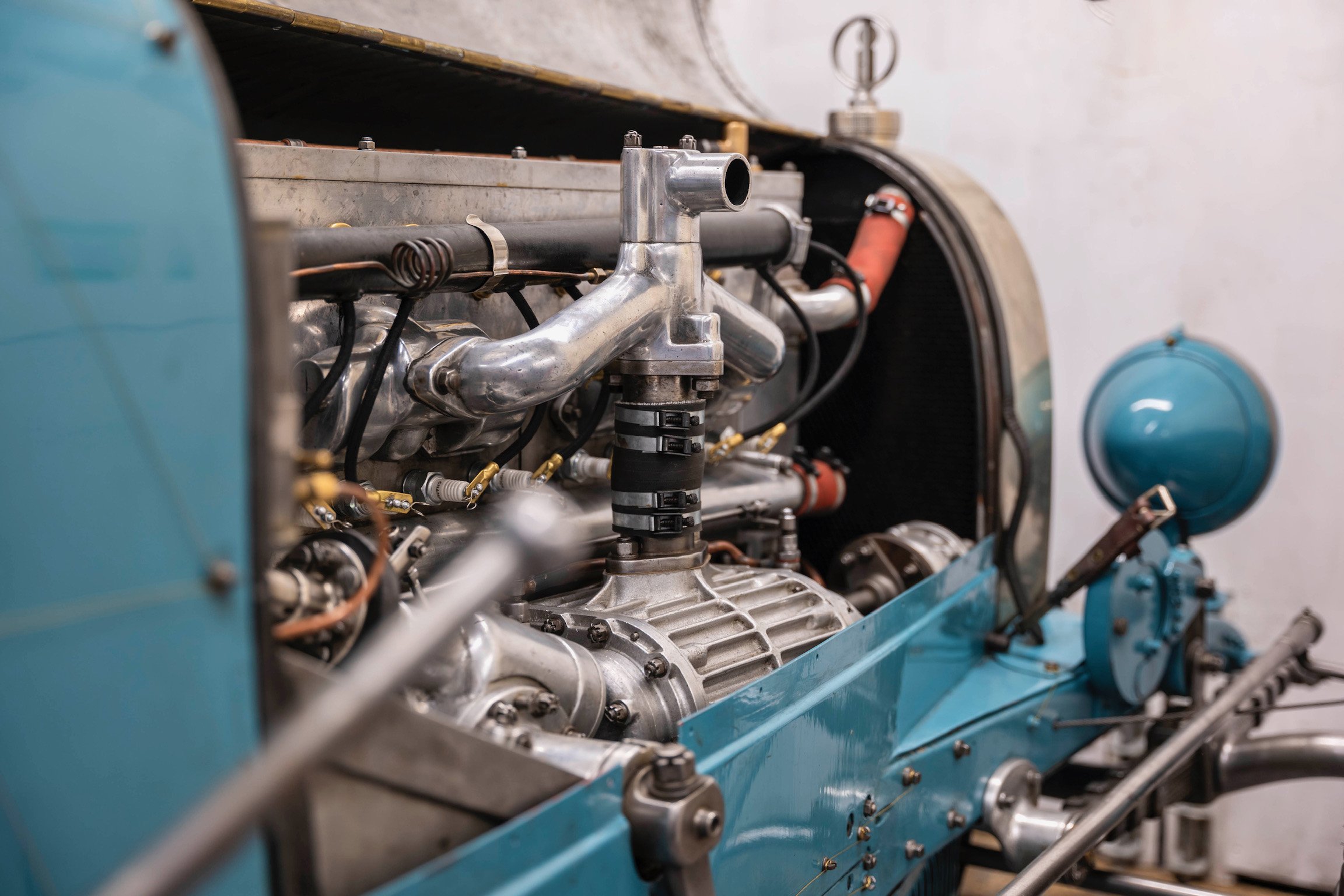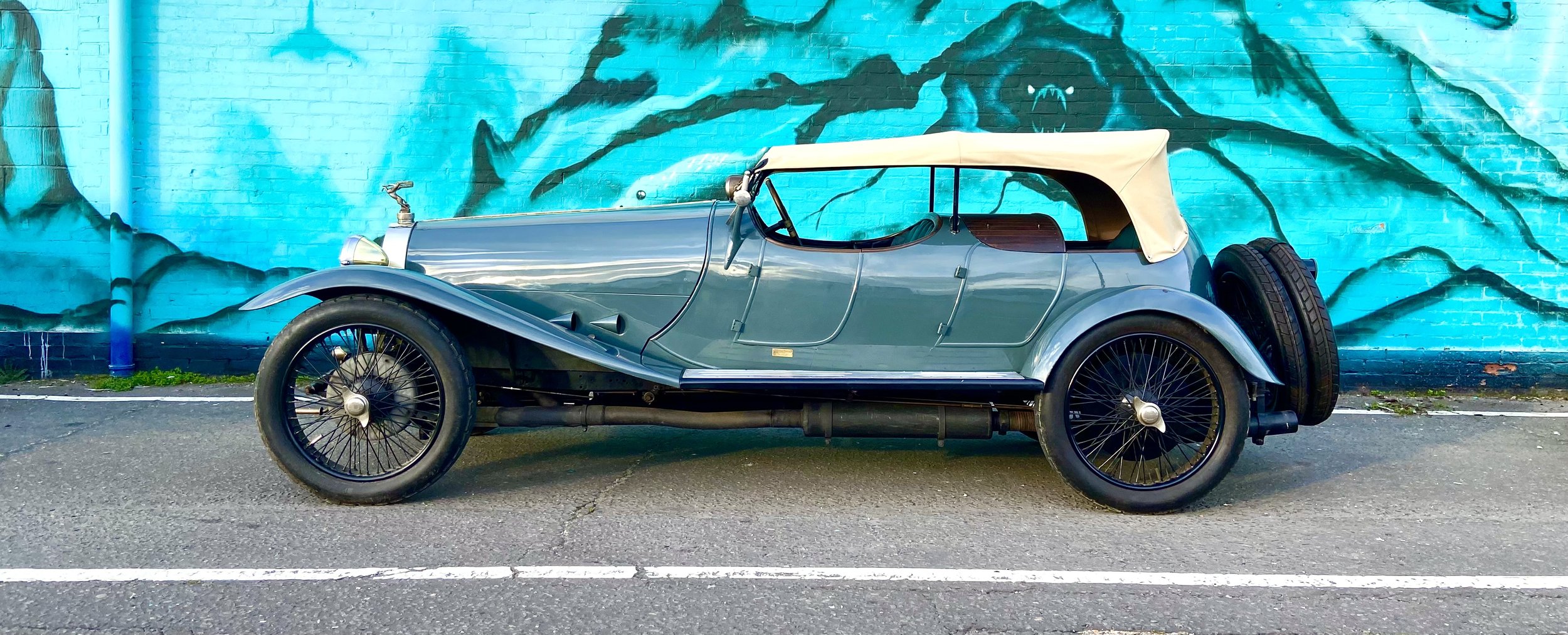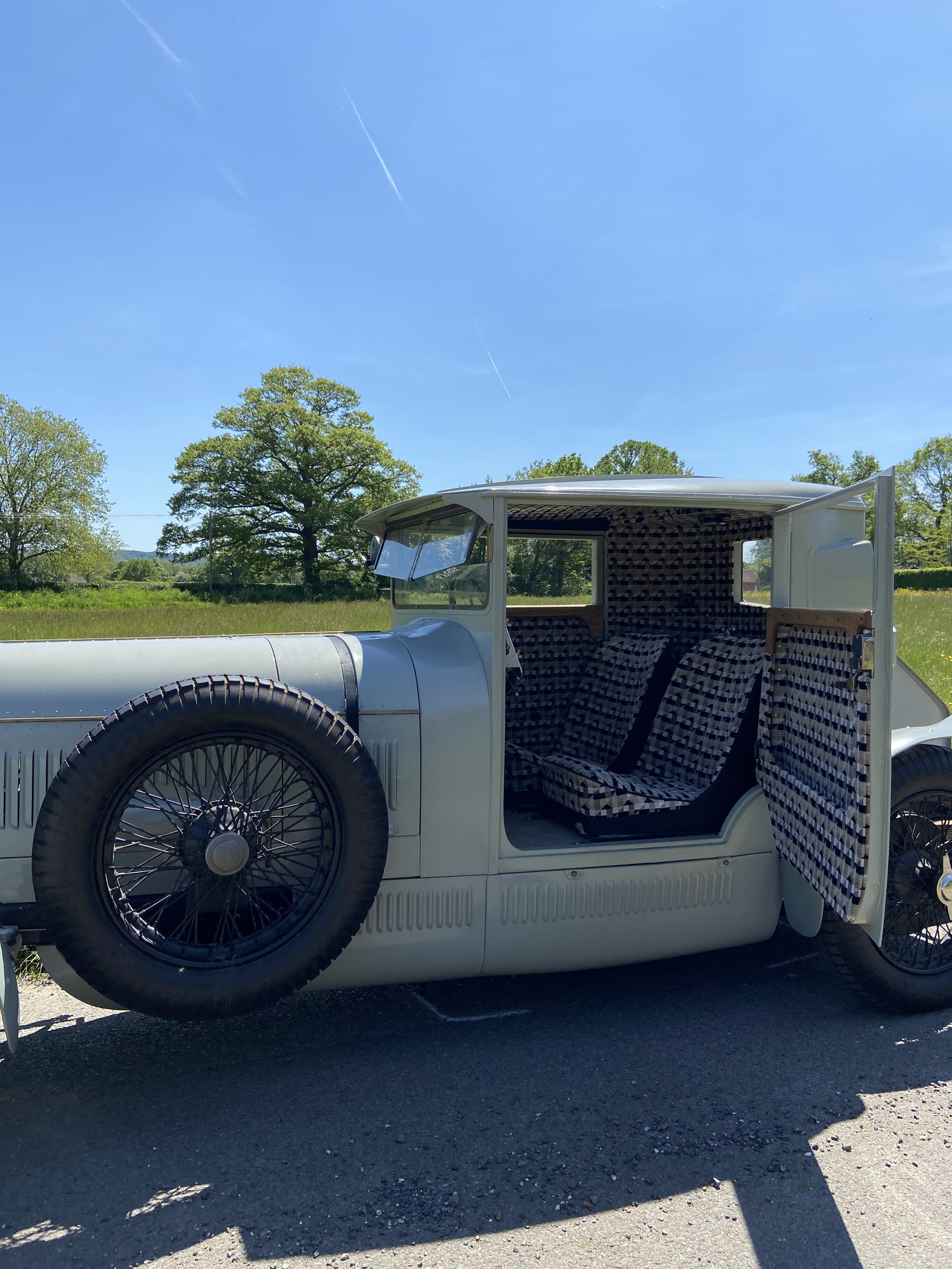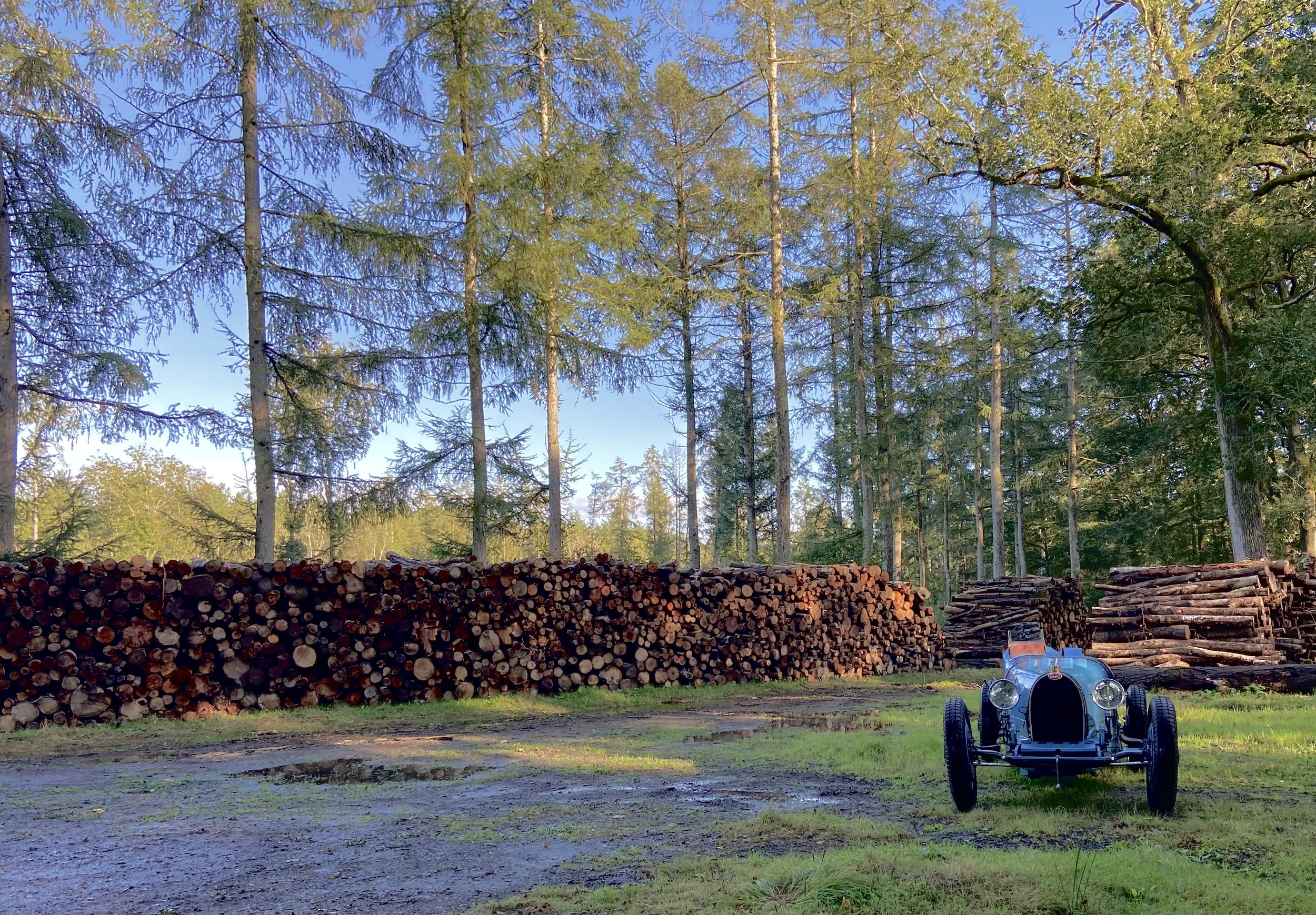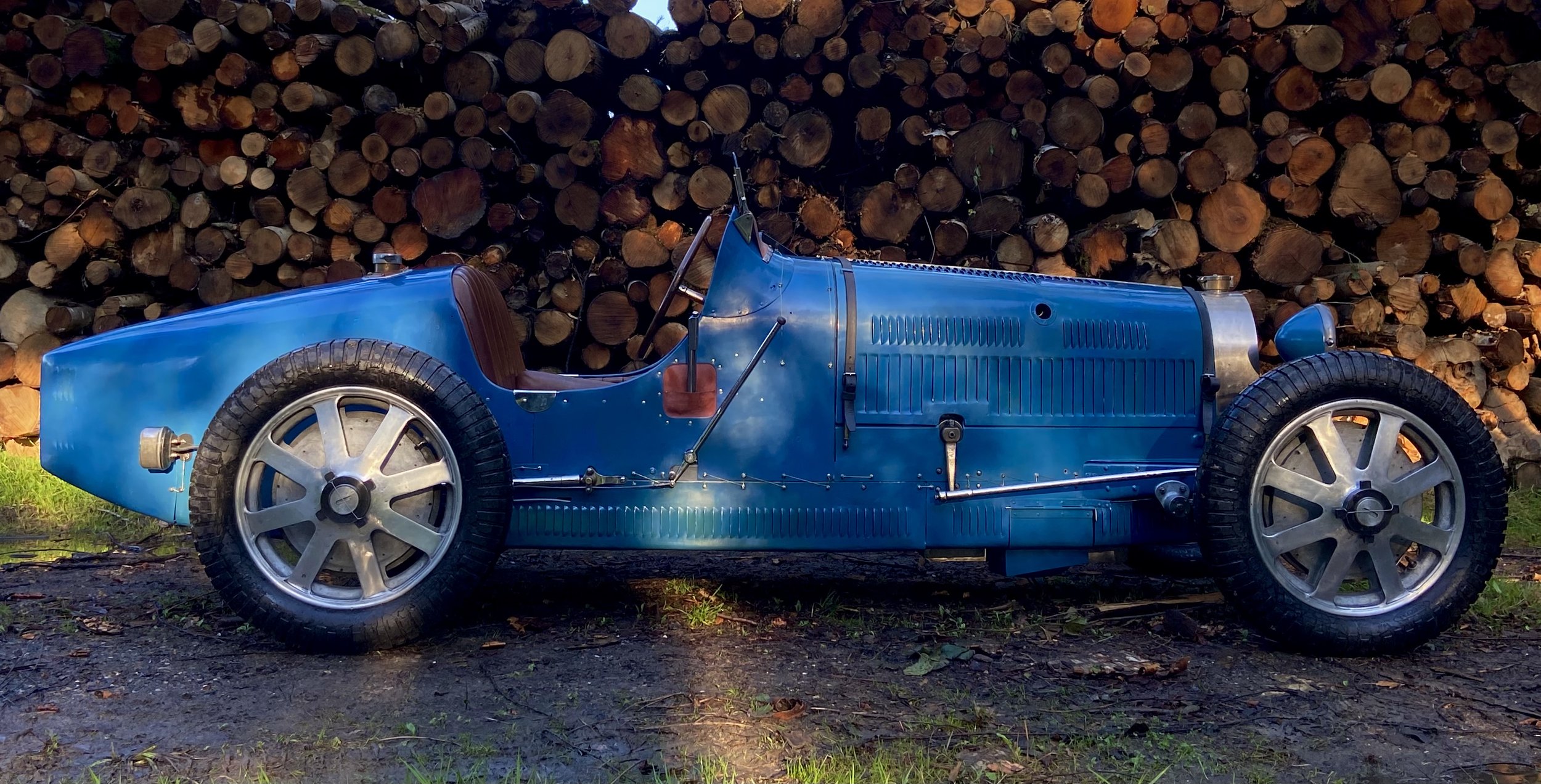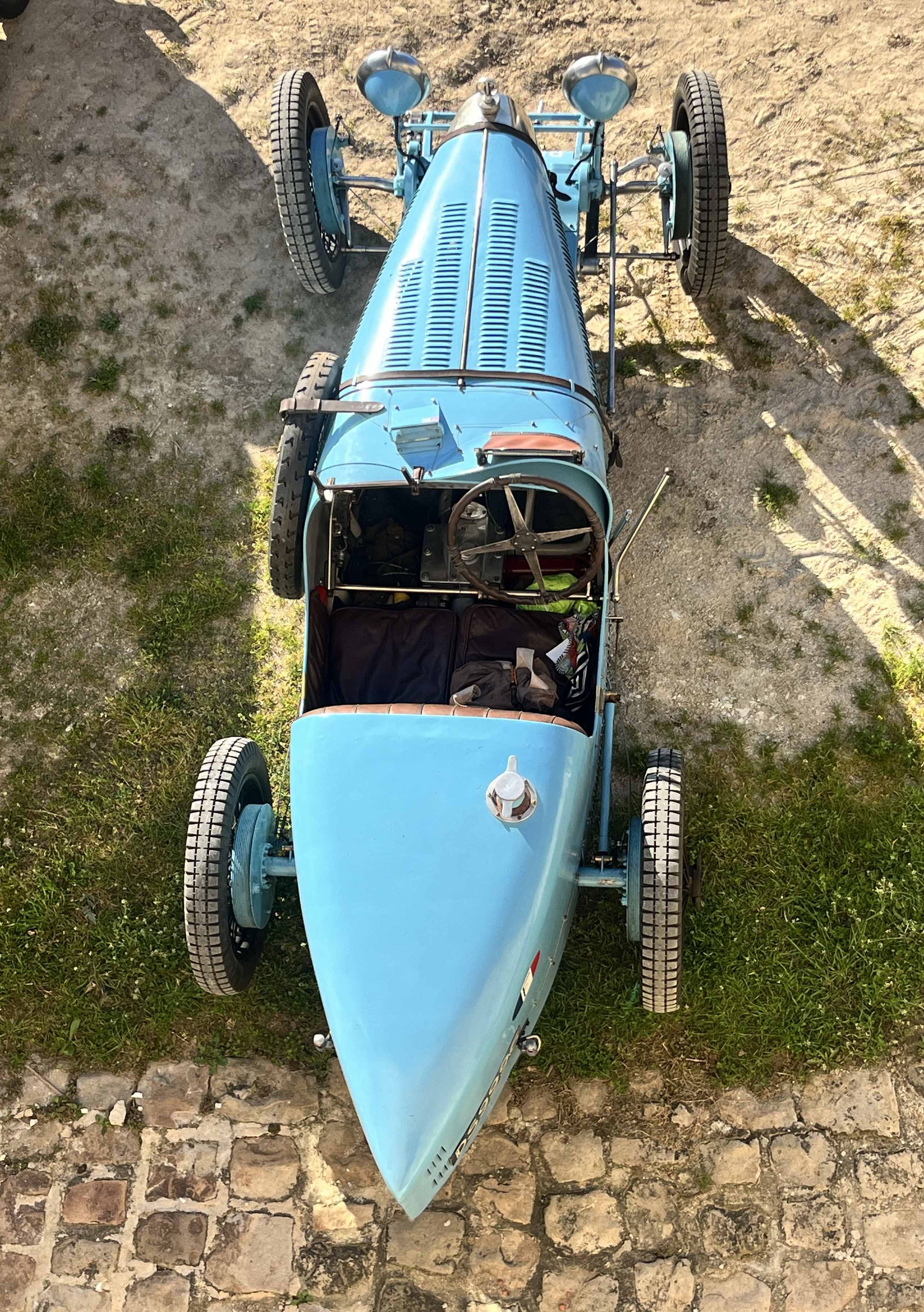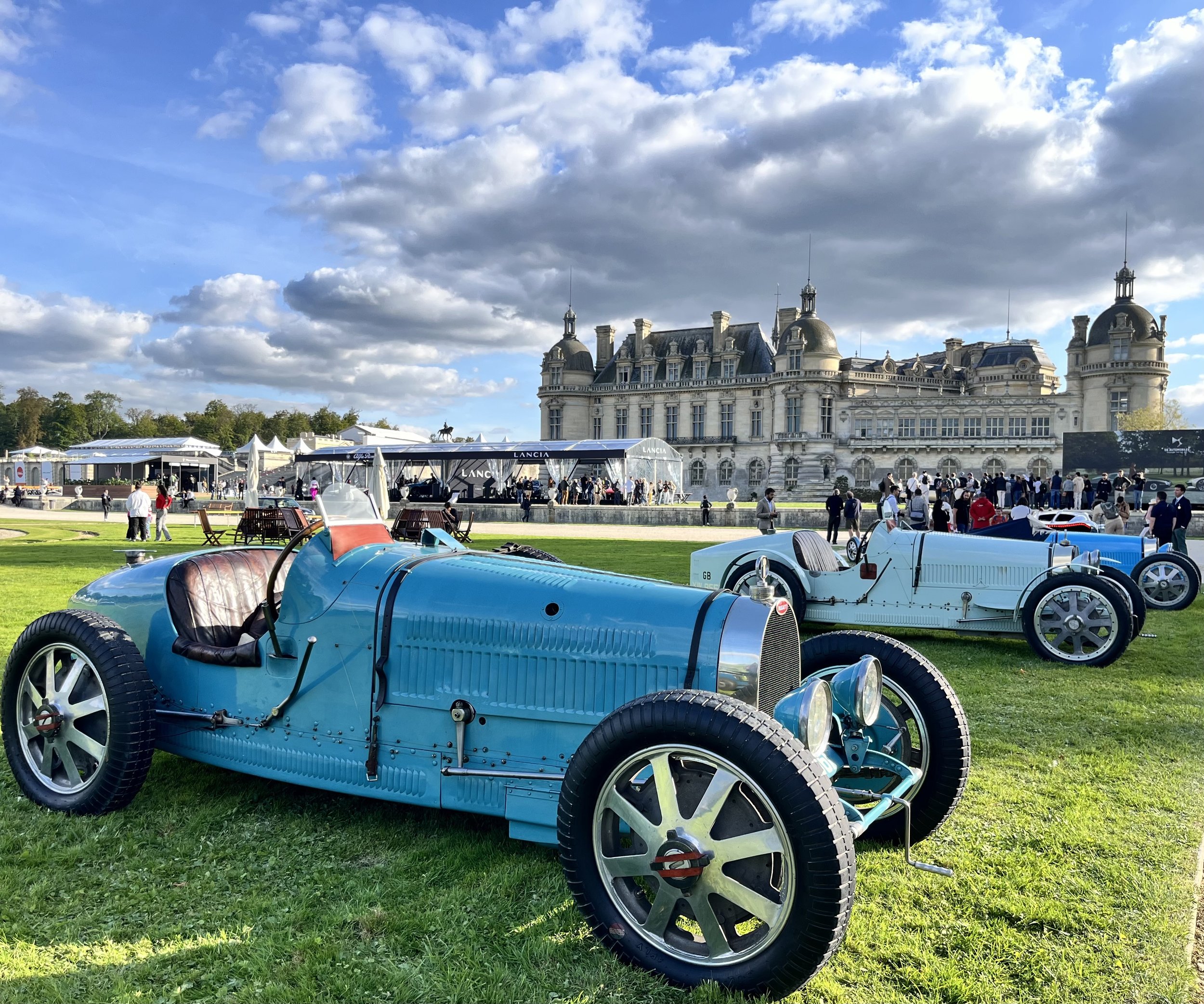
Bugatti
Much of our current work is centred around the restoration and maintenance of Bugatti cars. Projects have included Types 30, 35b, 35c, 37, 39, 40 and 57 as well as the Brescia. During the course of these projects we have gathered a large number of original Bugatti factory drawings for remaking damaged or missing parts in house as well as templates and patterns for remaking and restoring body panels.
Scroll down to see a selection of photos from the workshop and a case study of one of our restorations.
Type 35B 4888
During 2023 we undertook the complete restoration of Type 35B chassis 4888. This 1927 car was one of the very first of the fabled supercharged variants of the Type 35. Uniquely the car was ordered direct from Bugatti for road use rather than racing. The only concessions made for road use by the Molsheim factory were the fitment of lamps and a small luggage space behind the seats. Otherwise the car remained a full Grand Prix specification Type 35B.
Having never been raced or damaged in period, the car remains remarkably original, retaining all original panels, mechanical parts and all smaller components. Our extensive and complete restoration was guided by the belief that every original Bugatti made part should be saved and rebuilt rather than replaced. Everything from the aluminium body panels, to the roller bearing crankshaft, to the smallest fastener were sympathetically rebuilt to factory standard specification.
Where required to restore the panel work only the smallest pieces of corroded metal were cut away and new pieces let in, these were gas welded into place and manually finished. It was extremely important to us to preserve the original craftsmens’ work, so the panels were hand re-finished preserving the hammer and file marks of 1927. After exhaustive research into techniques, paints and colour the panels were repainted by hand in enamel paint.
Unfortunately the original leather trimming had been lost, so after much research we re-made these components. The seats were formed over salvaged timber frames with cushioning by springs and hair rather than modern materials. Raw leather hides from cattle raised on regenerative UK pasture were sourced. This has a unique barely processed quality which gives the trimming as close a match as possible to that of 1927.

